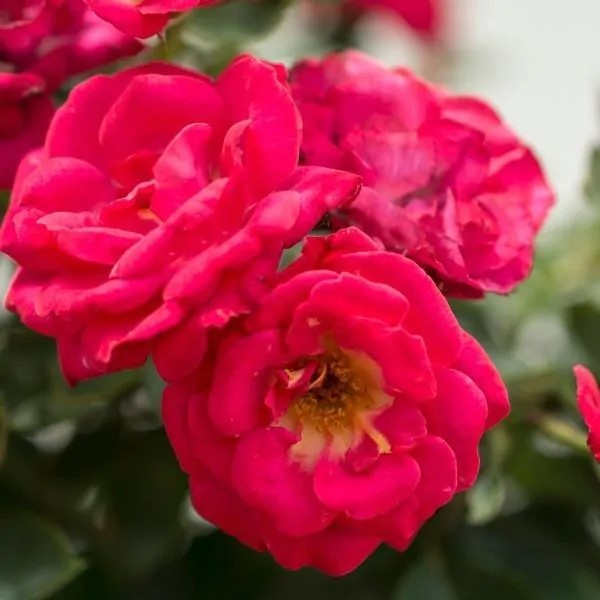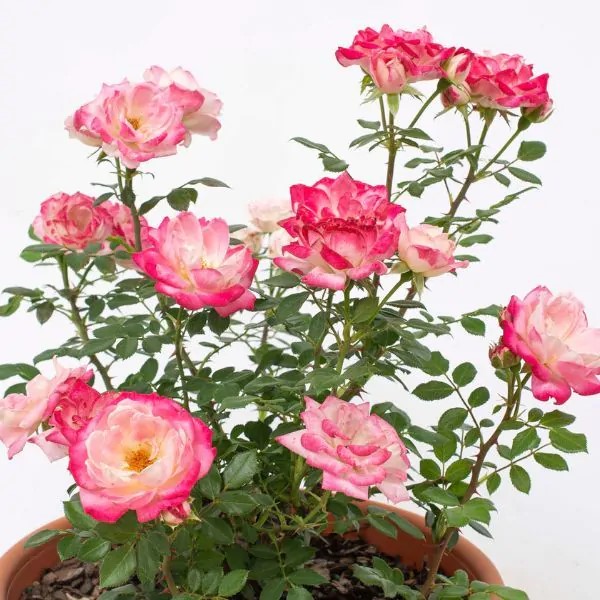How to grow miniature roses – for compact shrubs with a profusion of blooms
While miniature roses might be small in size, they are no less floriferous, with many blooming through summer until fall

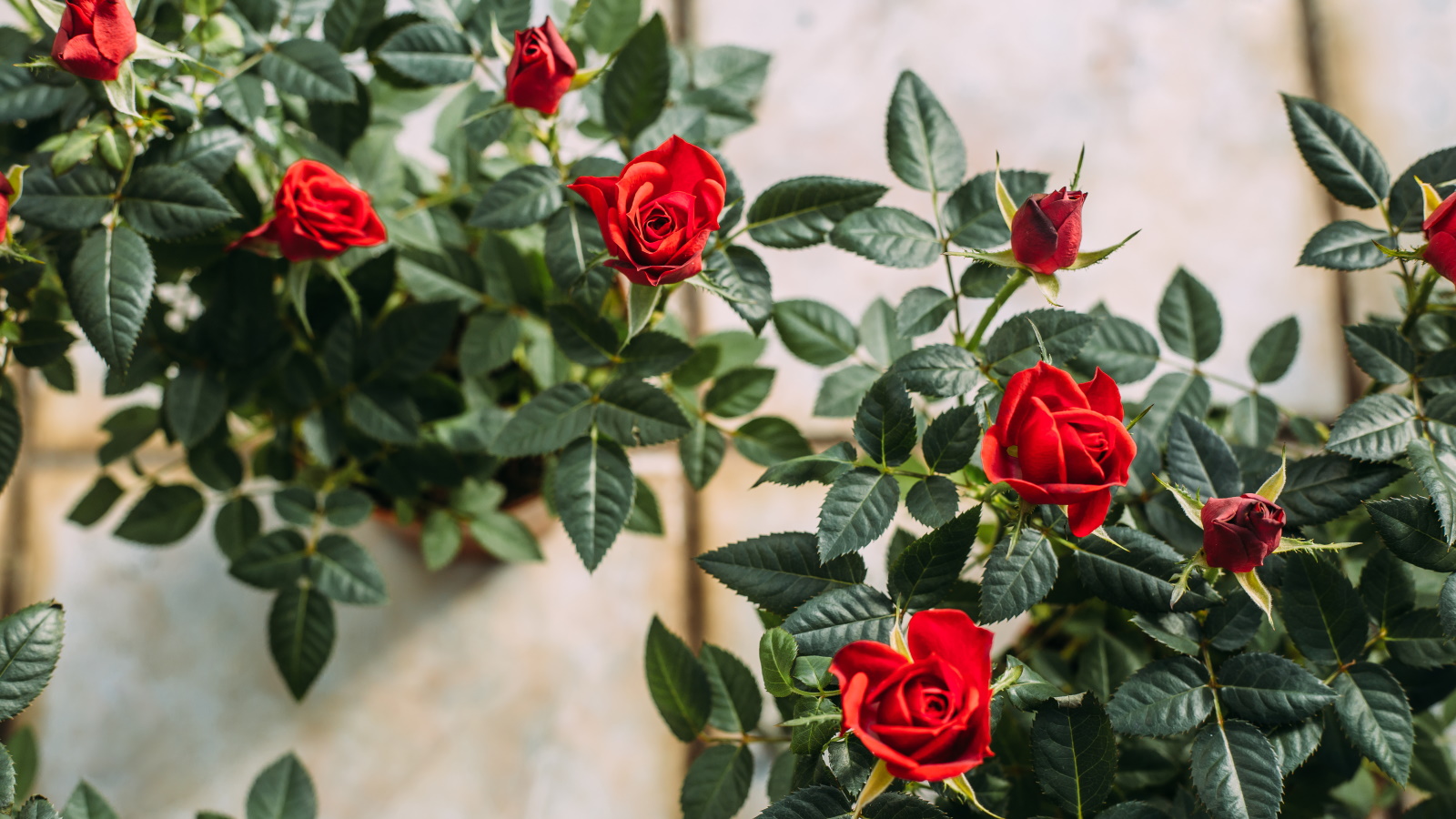
Miniature roses are compact floral bushes, popular for their small size and showstopping blooms. Often considered among the best rose varieties, miniature roses are a superb option for those thinking about rose garden ideas or patio planting ideas this year.
These small shrubs are the product of plant breeders creating compact versions of traditional rose garden favorites. Today, miniature roses can be found in a plethora of colors, many with beautiful scents. Despite their diminutive size, they certainly pack a floral punch for such a small shrub.
For those looking for small backyard ideas and struggling to select plants for tiny terraces or narrow balconies, miniature roses can add impact to any outdoor space with their beautiful blooms. Whether used in garden borders or as container plants, these compact flowering shrubs will bring joy to your yard year after year. Here, experts share top tips to grow and care for miniature roses.
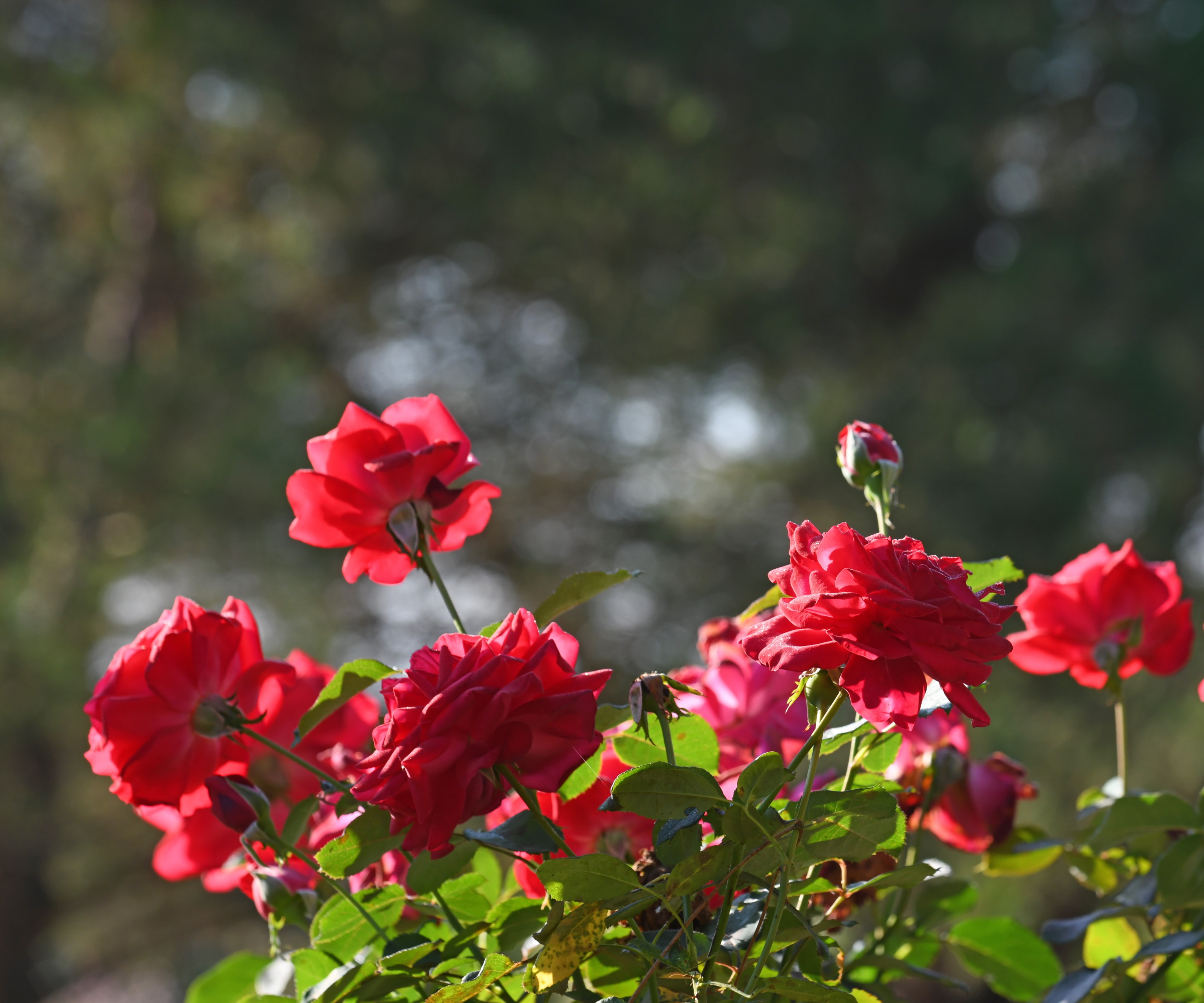
How to grow miniature roses
Miniature roses are suitable for any outdoor space, whether grown in a garden border or as a feature shrub in a container. Displaying beautiful colors and producing enticing fragrances, miniature roses are surprisingly hardy, tolerating the winter cold and flowering year after year.
Things to consider about miniature roses
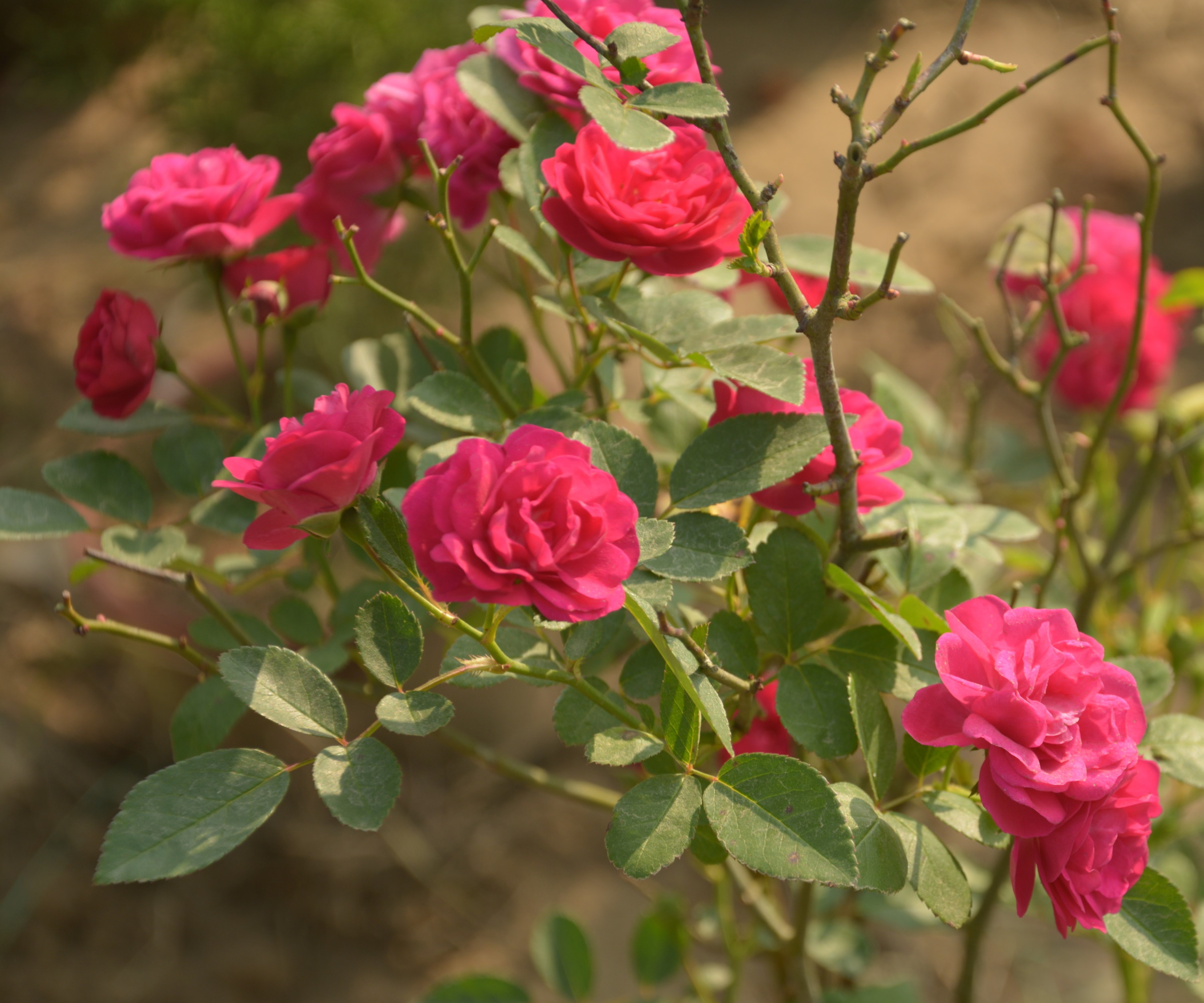
Despite their small size, miniature roses are surprisingly hardy, with different varieties 'growing well in US hardiness zone 5 to US hardiness zone 9,' says Whitney Laritson, Merchandising & Content Manager at Nature Hills. For those living further south, a handful of varieties will even grow in the tropical regions of zone 11.
Most miniature roses grow to a 'maximum height and width of 2 to 3 feet,' says Whitney, making them the perfect addition to small backyards. They will thrive if grown in garden borders or when planted in containers, particularly effective if grown on a small terrace or patio area.
Fully winter hardy, miniature roses can survive the cold and frosty winter months if left outside, but during the growing season, they are thought of as flowering shrubs for full sun, doing best in sunny and warm situations that receive at least 6 hours of direct sunlight each day.
Design expertise in your inbox – from inspiring decorating ideas and beautiful celebrity homes to practical gardening advice and shopping round-ups.
An added benefit of growing roses is that most varieties attract wildlife, noted for producing flowers that attract bees, butterflies and other pollinators. With a profusion of nectar-rich rose flowers that repeat bloom throughout spring and summer, your miniature rose will be alive with insect and bird life during the growing season.

Whitney Laritson is a garden expert and the Merchandising & Content Manager at Nature Hills. For the last 20 years, Nature Hills has been passionate about providing high-quality plants you can count on.
Shop Miniature Roses
Advice for growing miniature roses
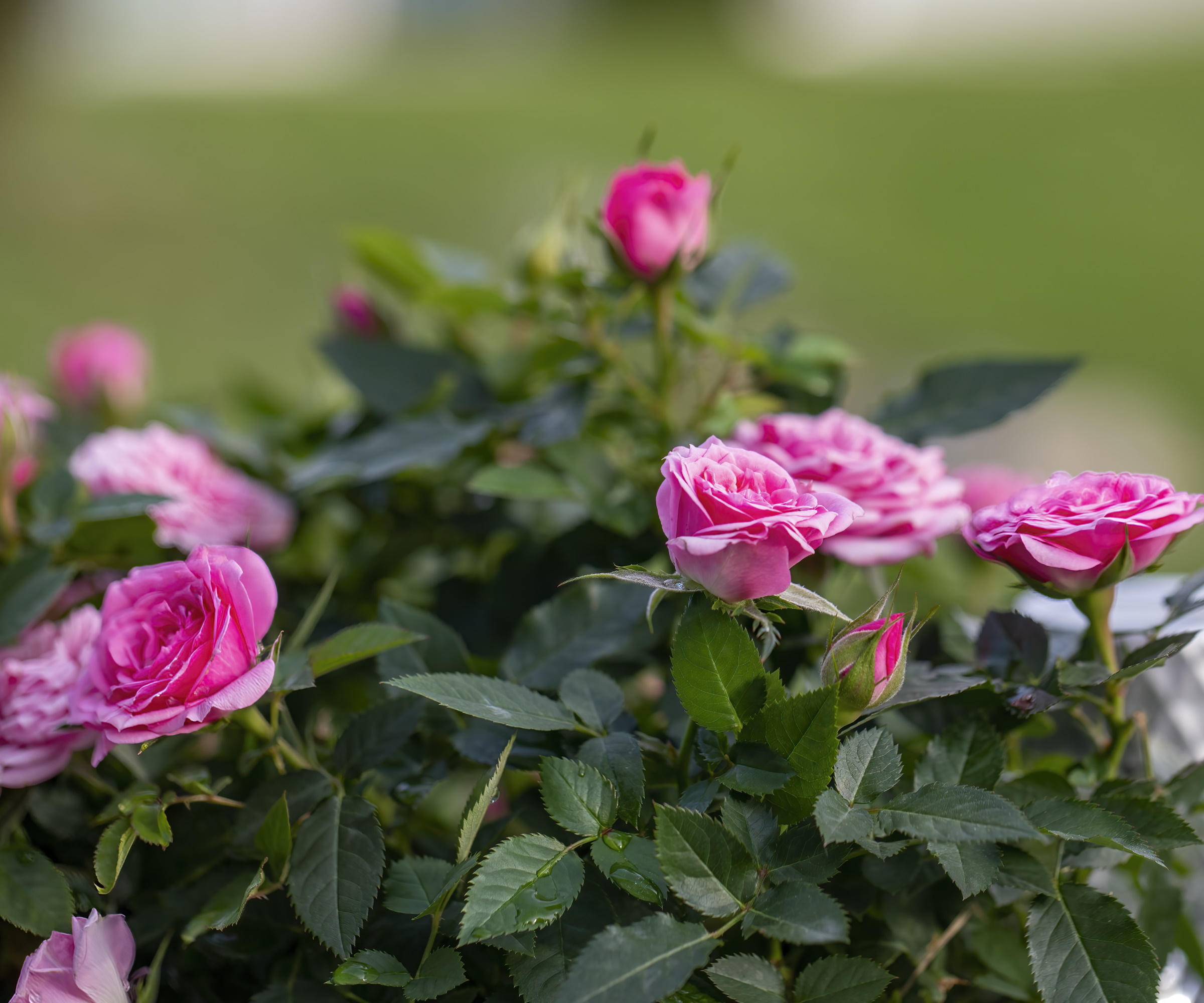
- Soil: Plant miniature roses in early spring when all chance of frost has passed. If planting in the garden borders, dig a hole slightly larger than the rose pot size, incorporating some rich, well-drained soil before planting. It can be a good idea to incorporate some rose-specific soil while planting, using something like this rose soil from Perfect Plants Nursery, which will provide plenty of nutrients for your new plant. Improve the quality of the soil each year by applying a layer of organic mulch in the fall.
- Light: Miniature roses prefer partial to full sun, with most varieties having a preference for direct sunlight. 'Most varieties of miniature roses require 6 to 8 hours of daily sunlight to thrive,' says Alex Kantor, gardening expert and owner at Perfect Plants. 'Although they can tolerate some shade, insufficient sunlight may result in fewer blooms,' Alex says, so selecting the most suitable planting location is important.
- Watering: Water your miniature rose regularly after planting, checking the soil frequently, especially during the summer months. Miniature roses will need frequent watering during spring and summer, particularly when in flower, so it is recommended that you add your new plants to your gardening watering list.
- Fertilizing: Rose shrubs require regular feeding. It is recommended to use a rose-specific fertilizer, or general all-purpose feed for your miniature roses, diluting any fertilizer in water as per the instructions on the packaging. As repeat bloomers, miniature roses require a significant amount of feed in the growing season, but be sure not to overfeed your miniature roses, as this can do more harm than good.
- Pruning: Regular rose pruning rules apply to miniature roses. As with other rose species and varieties, pruning should take place just before new growth is produced in late winter. Remove dead, damaged and diseased stems, before carefully shaping the rose bush, removing no more than one-third of the plant's growth to maintain a bushy and compact shape. Rose pruning must be done before new growth emerges in spring.
- Container advice: 'Miniature roses are well-suited to container growing,' says Alex. 'Plant them in a 6 to 8-inch deep container with drainage holes and use a nutrient-rich potting soil that promotes drainage.' To aid drainage, it is recommended that you 'add gravel to the bottom of the container.' Alex recommends 'regular watering and fertilizing, which may need to be done more frequently when growing plants in containers.'

Alex has worked in the horticultural industry for over 20 years and grew up on the farm since his childhood years. Alex is an expert on landscape trees, shrubs, and indoor plants. He is passionate about growing and helping others learn the trade. You'll see him driving around the farm with his sidekick, Cricket, in tow.
FAQs
Can I grow miniature roses in containers?
Yes, miniature roses are suitable for growing in containers. Due to their compact shape and size, they are well suited to growing in pots on a patio or a balcony. Ensure that the soil in the container is well-draining and remember to water and feed your miniature rose during the warmer months of the year.
Planting miniature roses in your backyard is sure to add color and fragrance to your borders and containers. For more showstopping plants that are suited to smaller spaces, consider growing additional plants that make your patio smell nice. In doing so, your outdoor living area will be surrounded by beautiful blooms and floral perfume.

Thomas is a Content Editor within the Gardens Team at Homes and Gardens. He has worked as a professional gardener for both public spaces and private estates, specializing in productive gardening, growing food and flowers. Trained in Horticulture at the Garden Museum, he has written on gardening and garden history for various publications, including The English Garden, Gardens Illustrated, Hortus, The London Gardener and Bloom. He has co-authored a Lonely Planet travel book, The Tree Atlas, due out in 2024.
